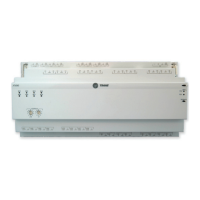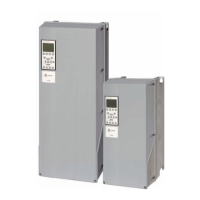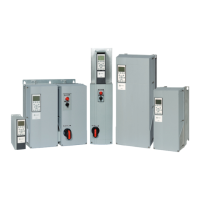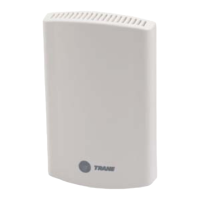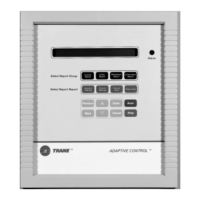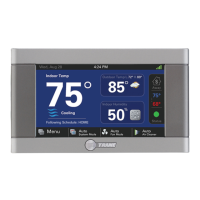CNT-SVX09E-EN 23
Troubleshooting
Troubleshooting
This section provides information about general troubleshooting steps to perform if there is a
problem with the operation of the equipment controlled by the MP503.
Important: Troubleshooting that involves accessing live electrical de
vices m
ust be conducted
only by a properly trained and authorized electrician or trained technician.
When encountering operational problems with the MP503, first perform the in
itial troubleshooting
in the following section, “Initial Troubleshooting”.
After performing the initial troubleshooting steps, refer to the following se
ctions for further
diagnosis:
• “Troubleshooting Binary Output (Relay Output),” p. 24
• “Troubleshooting Universal Input,” p. 25
Initial Troubleshooting
Always perform the initial troubleshooting steps listed in Table 13 before moving on to the specific
area of trouble. Perform the steps in the order they are listed.
Table 13. Initial troubleshooting steps
Step Number Action Probable Cause
Step 1
Look at the red Service LED. If it is flashing once per second, the module is not executing the
application so
ftware because the network connections and addressing have been removed.
Refer to the section, “Status Indicators,” p. 20. Use the Rover service tool to restore normal
operation. For
more details, refer to the Rover Operation and Programming Guide (EMTX-
SVX01).
MP503 is not
co
nfigured
Ste
p 2
Look at the green Status LED. It should be on continuously d
uring normal operation. A blinking
Status LED indicates abnormal behavior for the MP503. Refer to the section, “Status
Indicators,” p. 20.
MP503 circuit board
pr
oblem
Step
3
Use your meter (set to measure ac voltage) to measure the voltage across the ac power
terminals on the MP50
3 (with ac wires connected).
If the voltage is approximately 24 V (20–30 V) on the terminals, the board is receiving
adequate input power. The M
P503 circuit board has a problem.
If the voltage is approximately 0 V, proceed to the next step.
MP503 circuit board
problem
Step
4
Disconnect the ac wires from the input power terminals. Use your meter (set to measure ac
voltage) to measu
re the voltage across the ac wires.
If the voltage is still approximately 0 V, the board is not receiving the power it ne
eds to run.
Input power problem

